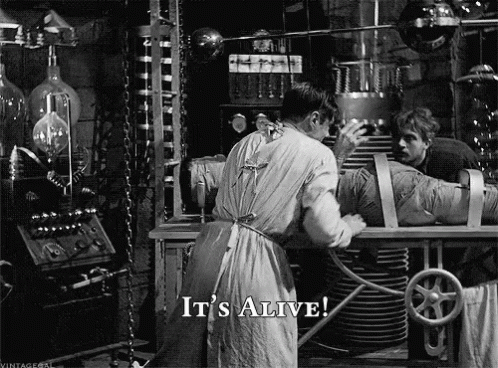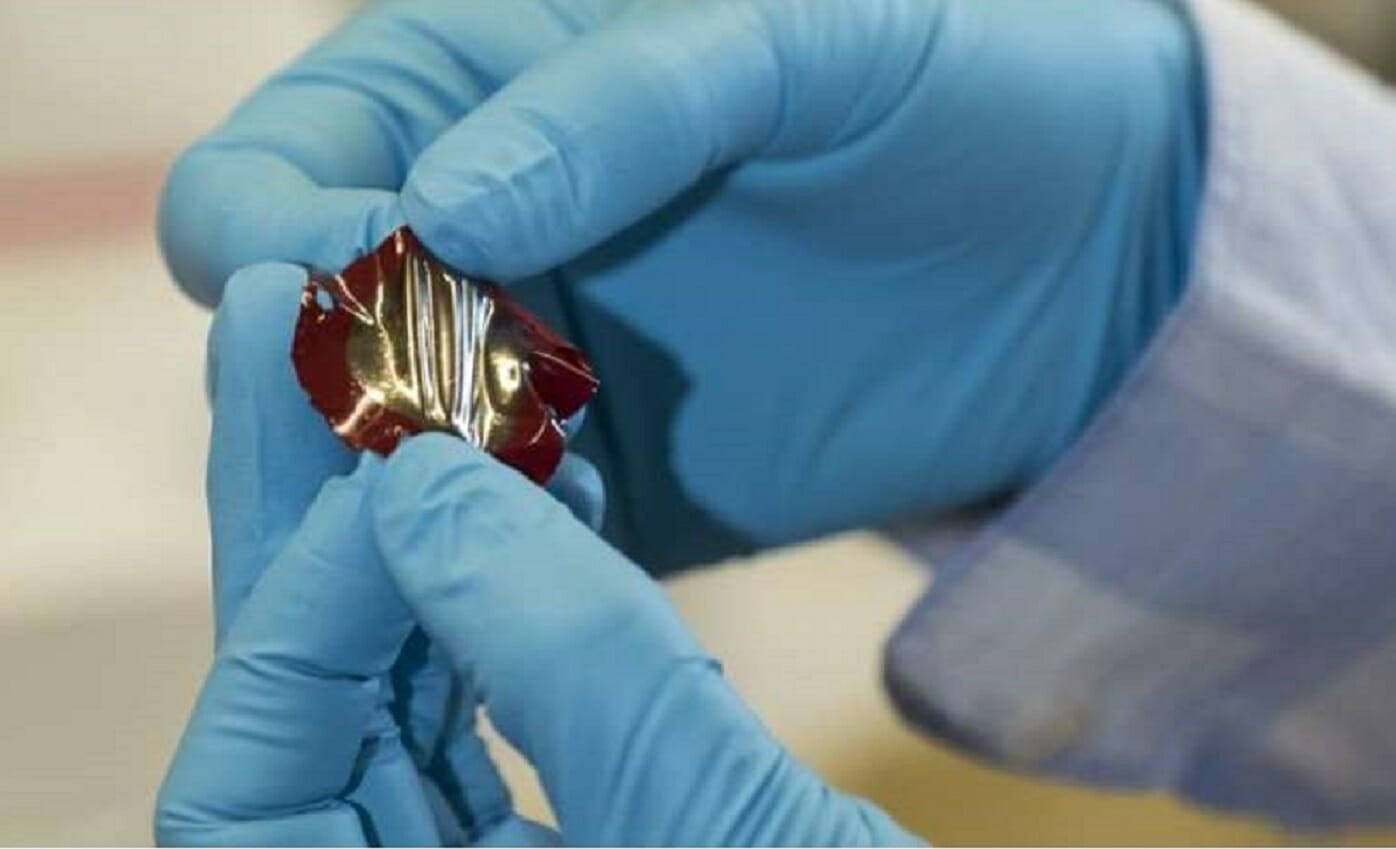Almost everyone knows the story of Frankenstein. The story goes about the creation of a great monster by drawing lightning from the heavens, and the scientist makes use of his knowledge of electricity and human anatomy to reanimate the dead.
This story by Mary Shelley was based from actual scientific events in history. It has been influenced by a scientific feud that brought about the first battery and how we understand electricity today.
Source: Giphy
This all started in the mid-18th century, when electricity was still the talk of fascination between top scientists of that time. At the University of Bologna in Italy, the surgeon Luigi Galvani was studying the effects of electricity on animals. In 1781, while dissecting a frog near a static electricity machine, Galvani’s assistant touched a scalpel to a nerve in its leg, and the frog’s leg jumped! Galvani then performed this on different experiments and observed the same results.
Galvani called this “animal electricity”, as he believed that the electricity came from the frog itself and published his findings in 1791. He also noticed that the frog legs occasionally twitched when they were hung from a brass hook and when it touch an iron trellis, so Galvani joined a length of each metal into a brass and iron arc that made the leg muscles contract when they touched.
Physicist Alessandro Volta, who was already known as the discoverer of electrical capacitance, potential, charge, as well as the first to isolate methane gas, was one of Galvani’s earliest readers. He repeated Galvani’s experiments, and helped his works gain popularity.
However, Volta reached different conclusions. He believed that electricity came from the two metals that were used in the arc, and that the frog was only acting as the conductor. Within the year, he replaced the frog’s leg with brine-soaked paper, found that there was a current, and then challenged Galvani.
The scientific world was divided into two camps. Was it animal electricity? Or the dissimilar metals. In 1799, Volta then invented the voltaic pile, which was a stack of discs of two different metals separated by brine soaked water. This was the galvanic or voltaic cell which came to ge the world’s first battery and the predecessor of automotive lead-acid batteries.
Now, we all know that Volta’s stack worked because the dissimilar metals transferred electron in an oxidation-reduction reaction, and the frog legs were able to move because electricity has something to do with muscular contractions. So how did all of this influence one of the most well known stories of all time, “Frankenstein”?
 Source: Bloody Disgusting
Source: Bloody Disgusting
It was because of Galvani’s nephew, Giovanni Aldini. He took the side of animal electricity, but he did not ignore Volta’s pile. He used the study to tour the capitals of Europe to demonstrate the medical benefits of electricity. But it was a bit–err farfetched. His demonstrations would involve jolting corpses with electricity and making decapitated criminals sit upright!
One of his most famous exhibitions took place in 1803 at the Newgate Prison in London. He inserted metal rods into the mouth and ear of the recently executed corpse of murderer George Foster. According to the Newgate Calendar, a book about the criminals of Newgate Prison, “On the first application of the process to the face, the jaws of the deceased criminal began to quiver, and the adjoining muscles were horribly contorted, and one eye was actually opened. In the subsequent part of the process the right hand was raised and clenched, and the legs and thighs were set in motion.”
There were some observers who thought that Aldini was bringing the corpse back to life.
Frankenstein’s author Mary Shelley knew all about Galvani, Volta, and Aldini and thought that their story could inspire a ghost story about electricity’s potential to bring the dead back to life.
Source:












